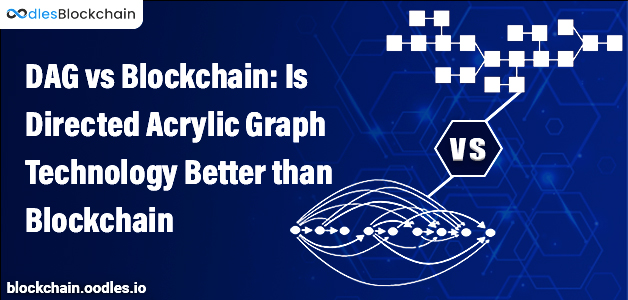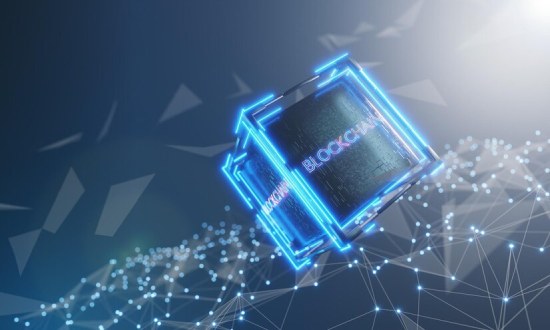-
Blockchain technology has come a long way and completed a decade in an entity. So the first ten years have brought to the surface new as it has been interesting. Thus making the billionaire the rich list overnight is an engaging source of investment with some enthusiasts.
Although, the most breathtaking highlight of the last ten years of cryptocurrencies is the distributed ledger technology (DLT) that bears digital currencies. As we all know, the very first digital currency Blockchain hits popular headlines in the instant outcome of bitcoin.
Distributed Ledger Technology(DLT) and Blockchain Technology are both terms often used compatible. But, that is not correct as DLT includes other technology and is a border term. The Directed Acyclic Graph is another type of DLT. Although the dubbing of several crypto protocols has been “Ethereum Killer, “ but has seen finite tangible success. Thus, sometimes DAGs or Directed Acyclic Graphs are called “Blockchain Killer."
Both DAG and Blockchain technologies can be distributed and decentralized. Also, both these can record transactions on a digital ledger. They both have a token-economic incentive mechanism. As they have many similarities, they are altogether different from each other.
Read more: Why EOS Is Being called the “Ethereum Killer”
What is a Directed Acyclic Graph?
A Directed Acyclic Graph(DAG) is a graph that represents a series of activities and the flow from one activity to another. The representation of activities is as circles (vertex), and the order in which the complete depiction of activities using lines(edge) with a unidirectional arrow.
In particular, DAG is a directed graph unique type of data structure that uses a topological ordering and a type of distributed ledger technology that relies on consensus algorithms. Although for allowing developers to express themselves because the model of DAG is super flexible. Thus, the usual DAG connects different pieces of information and the registration for new transactions to be in a DAG. Also, it must reference older identical transactions. In common, two things happen, at the point of recording transactions on the DAG in which the referring of older transactions is noted. And the confirmation is also at the same time.
Although the related problems to data processing, scheduling, finding the best route in navigation, and data compression DAG is often applied. In general, embracing nodes connected with edges comes down to a few types of web. Thus with a specific direction, the edges are a connection between nodes. So, when moving from node to node by following the edges, Acyclic means that it's not possible to experience the same node for the second time. One of the differences lies in the data structure instead of adding blocks constant to a chain, use its Direct Acyclic Graph (or web).
Also, read: A Comprehensive Guide To DLTs and Types of Blockchain
Read more: Deploying a Smart Contract on Hedera Hashgraph Network with Java
Differences between Blockchain and DAG technology
Having analyzed what DAGs are, let us now feature their crucial differences when matched to blockchain technologies solutions. So, various key differences are running on both technologies. Let's see each one of them.
Mining process
While achieving new coins in return, the Mining context is generally the procedure of approving transactions in a blockchain. Through specialized hardware processes, the miner solves complex computations. So to add transactions to the new block and earn tokens for his efforts successful miner gets to confirm.
Through the Proof-of-Stake model, blockchain networks can also gain consensus besides mining. Here, the taking over role of miners is by validators. So attaining consensus here is dependent on the value of stakes in the network.
Blockchain: Participants can mint new tokens via different consensus mechanisms.
Directed Acyclic Graph: The past transaction validates the achieving success to consensus.
Transaction speed
The ideology of Blockchain technologies is to be faster, although DAGs are quick. So waiting times or blocks inherent in blockchain technologies are absent here, promising faster transaction speed.
Although, in respect of scalability blockchain technology has a lower transaction number per second. So, adding a large number of transactions with improved scalability, and the unique data structure of DAGs all the same permits that.
Data structure
Verified data contained in a blockchain system is within blocks, coupled together in a series of endless chains of blocks. So the dependency of putting new data in each block is on existing transactions, which are all sealed using encryption. In a DAG, the storing of data is independent, as a layer atop one another.
Transaction validation
A secure transaction is on the miners or validators in a blockchain system either approve or disapprove the decision. In a DAG protocol, the achievement of a transaction relies on its expertise to approve previous transactions.
Launch date
The respective launch time is a big difference in the journey to maturity for both technologies. In 2008 when Satoshi Nakamoto anonymously released the Bitcoin whitepaper that introduced blockchain. But next was the first platform to leverage DAGs, and it came to the spotlight in 2015.
Popular network
There are many networks utilizing blockchain technology today. Some of the few networks running on a blockchain are Bitcoin, Ethereum, Tezos, and IOTA. By using blockchain technology other private startups or organizations also have private networks.
Thus dissimilar to blockchains, Directed Acyclic Graphs have lower network numbers running on them. The NXT, Tangle, and Byteball are the most popular.
Also, read: IOTA Distributed Ledger | Tangling with Tangle
Read more: Safemoon vs Bitcoin: How to examine these two Cryptocurrencies
What Are the Benefits of DAG?
DAG is a new protocol like blockchain, and many have confirmed its uniqueness as even more revolutionary. For example, Hashgraph technology is a distributed ledger technology that uses DAGs to build an asynchronous Byzantine Fault-Tolerant (aBFT) consensus. Here are some of the implicit benefits of this new technology.
Speed
High transaction speed accounts for one of the prime advantages of a Directed Acyclic Graph. So at the same time, any user can broadcast transactions on the network and get approval. But in a typical blockchain network, there is a time-lapse or waiting period between logging transactions and confirmation. That process is Block time.
Easy Scalability
The evolution of DAGs solves Proof of work (PoW) blockchain network scalability issues and offers adequate throughput. It is possible because the limitation of them is not by block times. Thus compared to a traditional blockchain, Directed Acyclic Graphs can process an increased number of transactions per second (TPS).
Absence of mining
DAGs are free of mining, unlike the mining process adopted by Bitcoin, Ethereum, and other coins as their consensus algorithm. So the absence contributes to the efficiency of DAGs in recording transactions, although PoW is not bad in itself.
Cost-Effectiveness
The approval of DAGs use has been more cost-effective than the main public blockchain option sound today. Thus the protocol has no minors that inspire before confirmation of transaction reduces entire pressure. It boosts the addition of more transactions. And that is without the fear of increased charges.
Energy Efficiency
The high energy consumption of DAG and its projects or protocols do not use the PoW consensus mechanism. Thus the compared PoW-powered blockchain has placed all direct acyclic graphs as a more ecological option. The other DLT and role of profiling cryptocurrencies BTC-backed technologies in climate change.
Is DAG better than Blockchain?
The talking around DAG and Blockchain increasing in intensity, speculation, and reach. As we know, the bitcoin blockchain is the oldest, but DAG can indeed solve most of the blockchain’s problems. Thus DAG is the biggest and the most decentralized DLT out there. Besides the entire DLT world right now is based on the market area before the blockchain application goes mainstream. Thus we cannot be sure that the bitcoin blockchain will still be the #1 crypto technology in the world 10 years from now. It is because the industry grows two or three times its current size.
Thus it pointed out that blockchain technology and DAG have similar features and differences. The question of which is superior depends on the deployment of its use cases. The use case profiling shows that both have their advantages and disadvantages. These use cases include the Internet of Things(IoT), Microtransactions, Large Payments, and P2P Energy Trading.
Conclusion
There are many variations of Distributed Ledger Technologies around today among all DAG and Blockchain are some of the most related. Both these technologies share some similarities, with marked differences. The confirmation of DAG has been an enhancement and the future of blockchain technology.
Distributed Ledger Technology has already outpaced the inferior challenges in its potential growth push. So we may see more mainstream firms begin to incorporate it into their business processes moving forward. If you want to implement DLT, connect with our blockchain experts.

Our Offices
INDIA
Emaar Digital Greens, Sector 61,
Gurugram, Haryana
122011.
Welldone Tech Park,
Sector 48, Sohna road,
Gurugram, Haryana
122018.














